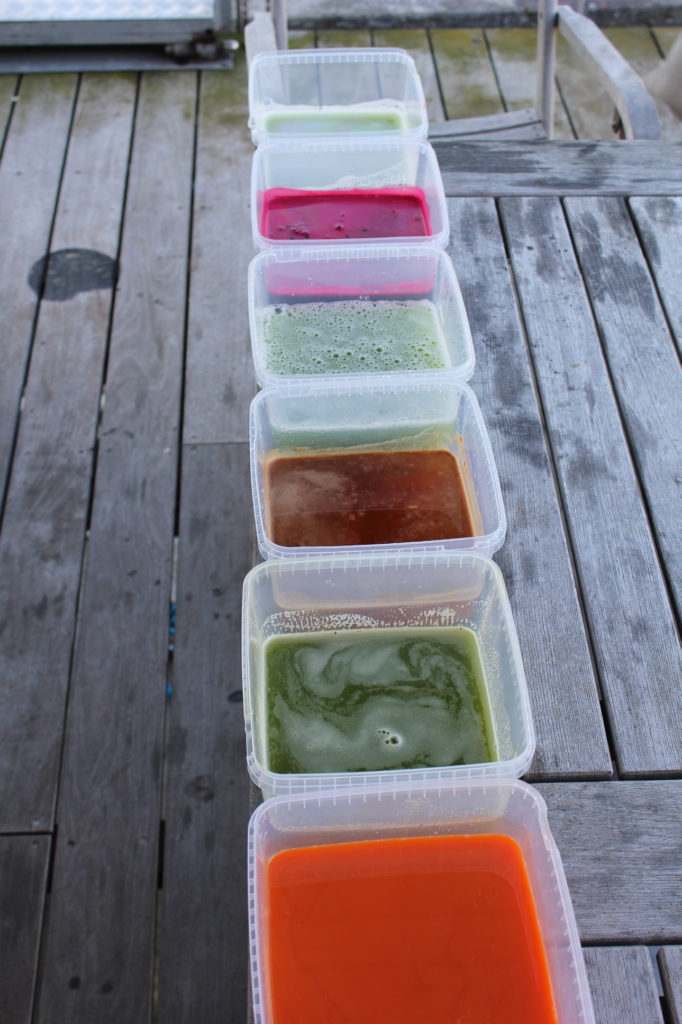by Ben Reade.
Vintage Carrots and Apples
Sweetness, one of the basic tastes, is of vital importance to cuisine. Although table sugar (sucrose) is generally seen as the basic ingredient and reference point for sweetness, NNC tends to steer away from overly sweet dishes, preferring to use little of no table sugar and taking sweetness from other ingredients, which are relevant to the region. Examples are given below of sources of sweetness which are or are becoming relevant to New Nordic Cuisine.
The highest concentration of sugars found in nature in the Nordic region comes form honey. There is a huge variety of honeys, each with it’s own peculiar characteristics. Depending on the flowers from which the bees have been harvesting nectar the honey will contain different aromatic molecules, giving the honey drastically different organoleptic characteristics. Honeys vary in viscosity, texture and aromatic profile; considerable variation exists between different honeys in sweetness, bitter and mineral tastes.
A second important source of sweetness to Nordic peoples is barley malt. Malt is obtained from germinated barley grains that have been dried and toasted to stop sprouting. The grains are rich in sugar, particularly the disaccharide maltose, which has a very distinct flavour a relative sweetness of approximately 0.5 (Relative sweetness is always measured relative to sucrose). Malt is used in the Nordic kitchen primarily for beer brewing, as well as for making extracts that can be used in a similar way to honey. Barley malt is rich in enzymes that the seed utilizes to hydrolyze its own structure in order to free energy for the plant’s growth. After a visit to a brewery, I realized that the temperature at which malt is kept to activate it’s enzymes is the same as that used in a lot of sous vide cooking 60-65°C. The enzymes in malt are primarily amylolytic, or starch breaking, and break down the starches in the grain into simpler sugars for the plant metabolism, or in the case of beer making, making sugars available for yeast nutrition. There are also small quantities of both proteolytic (protein breakdown) and lipolytic (lipid breakdown) enzymes present in malt and this led to experimentation with cooking meats in sous vide bags with malt. Over thirty different recipes were developed, implemented and tasted in a double blind sensory analysis with four chefs as tasters. The results were conclusive; pork cooked with malt was more tender, sweeter and more enjoyable than that without malt. It was found that by cooking pork (which is often cooked and/or served with sweet accompaniments in traditional Nordic cuisine) at 65°C for varying times with the malt and a little water (times 1-8 hours depending on the cut of meat) the meat took on a sweetness from the maltase and increased tenderness (presumably) from the proteolytic and lipolytic enzymes.
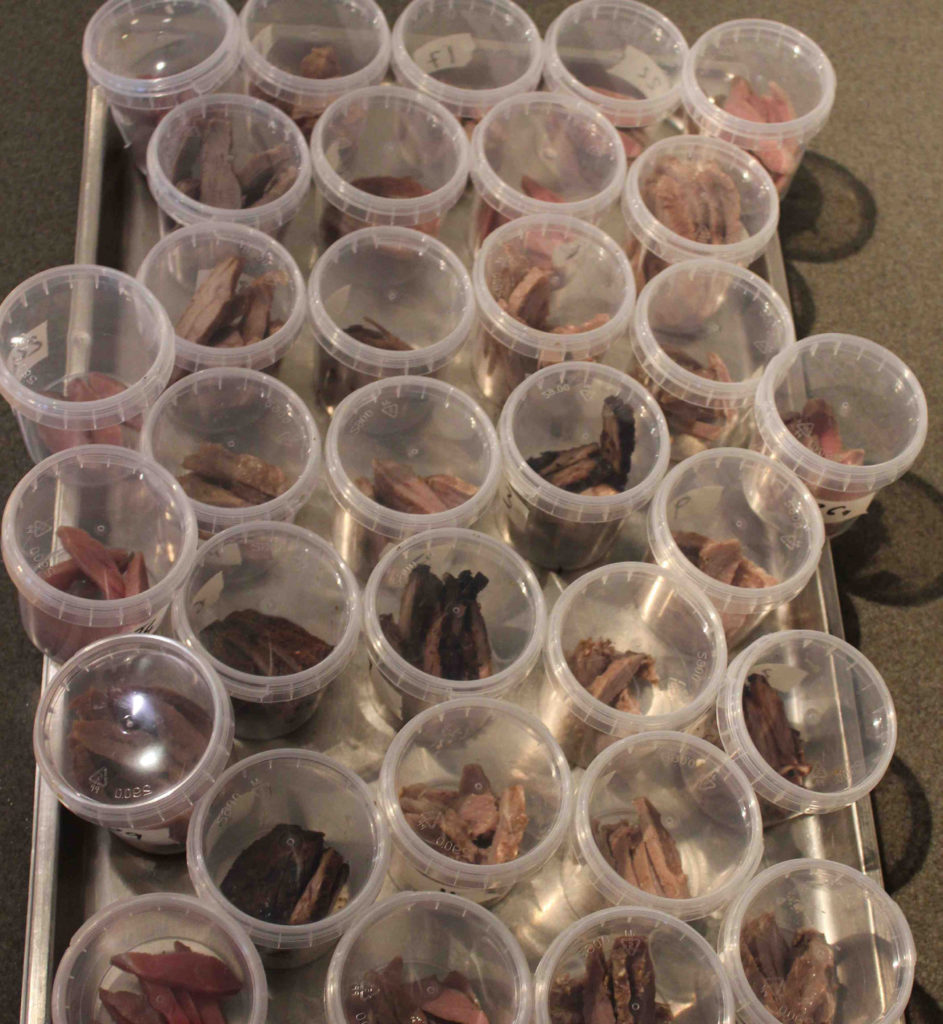
The next sweet ingredient to be looked at in brief is liquorice (Glycyrrhiza glabra) (see below). Liquorice, is an ingredient that has long been celebrated in Scandinavia. The root of Glycyrrhiza glabra contains a very potent sweet compound ‘glycyrrhizin’ which has a relative sweetness of approximately 40 times the sweetness of sucrose. The root, which has been used traditionally for many purposes, including oral hygiene and (especially in Scandinavia) confectionary offers interesting possibilities to the modern chef. One particular use, which was found at NFL, is the use of liquorice in acetic fermentations. Because of the non-fermentable nature of glycyrrhizin the resulting vinegar is sweet along side the acidity of the vinegar giving a fascinating flavour, which has great length in the mouth (more on this in a later post).
Liquorice root (Glycyrrhiza glabra)
Another interesting avenue of sweetness investigation at NFL has been that of koji. Koji, a mold culture of A.oryzae and A.soyae that, in Japan is traditionally grown on one or a mixture of rice, barley and soybeans. The mold culture is used to hydrolyze the starches and proteins in the fermentation substrate. It does this through the production of hydrolytic enzymes. During the process the grains become very sweet and delicious. Although most investigation of koji at NFL has involved subsequent fermentation – for sake, soy sauce or miso etc), the ingredient deserves further investigation for it’s very individual flavour and sweetness. One interesting application has been described in an earlier post by Lars, ‘Our kind of Cake’. NFL is currently working with microbiologists to find local strains of molds, which can be used to similar effect.
In all of Europe, probably the most ubiquitous form of sweetness is that of fruits and some, especially root, vegetables.
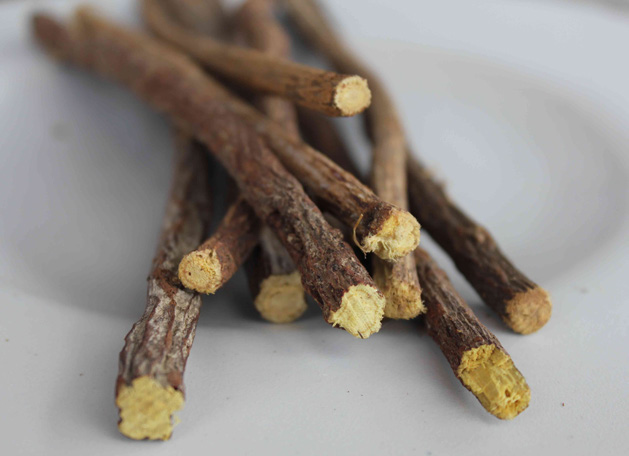
Fruits are also typically quite high in acidity. Use of a juicer in order to obtain high quality juices that can be used very fresh has become increasingly important in modern food. Freshly juiced fruits and vegetables are recognized for their health giving properties. Fresh juices from fruits are typically very delicious, rich and balanced in both sweetness and acidity. It is important to remember that if a juice is not sweet enough for the desired purposes, rather than using sugar or another sweetener, it can be a much more successful strategy to concentrate it at low temperatures with a large surface area until the right consistency and flavour is achieved. The concentration of sugars should be measured with a refractometer to ensure consistency in recipes. Some fruits and vegetables may produce low yields of juices; these can be improved with a number of strategies. The use of a Superbag, a very strong and fine meshed (100 micron) bag can be used to squeeze pomace of some more difficult-to-juice ingredients (e.g. celeriac), as well as help in clarification with any juice. Freezing and thawing the fruits before juicing may increase the yield by breaking down cell structure (e.g. quince). Centrifuging can be very useful in separating suspended solids out of juices, thereby clarifying and splitting the juice into various useful fractions (juice of garden peas has proved particularly interesting). Yields, processing strategies and °Brix (a measurement of the refractive index of a liquid which is indicative of sugar concentration) for a small selection of fruits and vegetables are given in below.
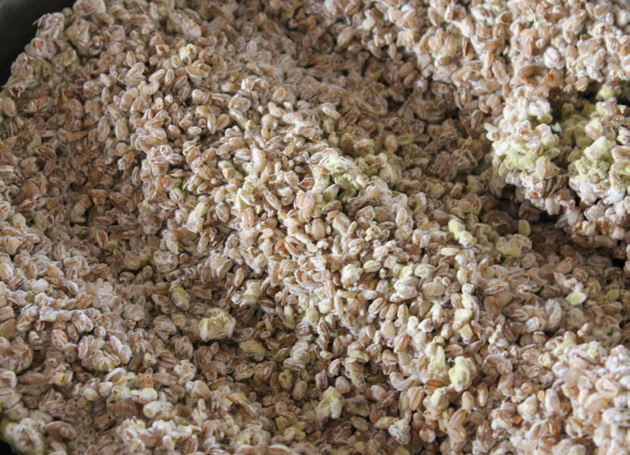
Strategies, yield and °Brix for fruit and vegetable juicing
Carrots Peeled, tops and tails removed 45% yield 6.5°Brix
Pears Peeled, cored and quartered 64% yield 8.5°Brix
Green apples Quartered 46% yield 11°Brix
Beetroot Peeled and quartered 59% yield 10°Brix
Cucumber Peeled and topped 63% yield 2°Brix
Cabbage Outer leaves removed 35% yield 7.5°Brix
Celeriac Thickly peeled, pomace squeezed 52% yield 6.5°Brix
Quince Frozen slowly and thawed 54% yield 12°Brix
To ripen climacteric fruits (pears, plums, apricot, apple, quince, etc.), lowing acidity and raising sugar levels, the chemical ethylene can be used. Ethylene is used in a synthesized form in the fruit industry to ripen fruits when they are required. This can be applied in the household/restaurant scale by using fruits that produce the chemical, especially bananas, however, meadow hay will often produce more, lasts longer, and does not get ripe/rotten itself. For this reason by filling a wine box with alternate layers of hay and e.g. apricots, and leaving it closed, the hay, at the same time as keeping the fruits from touching each other (which would encourage molding) will also help ripen the fruits. I have carried out numerous experiments, and the hay not only makes the fruits ripen faster and more evenly but also imparts a specific flavour, which can be described as beneficial.
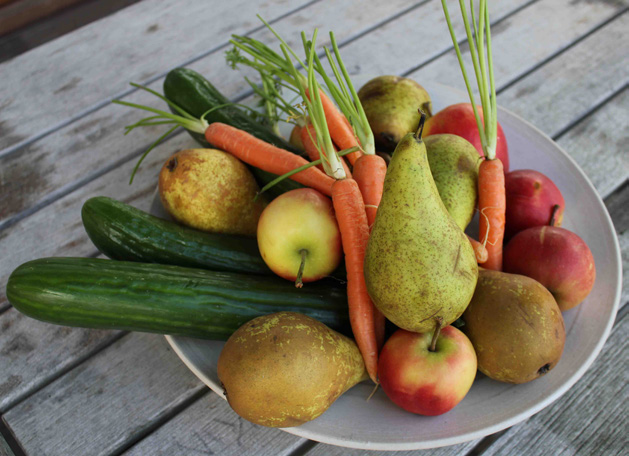
About the author
My Name is Ben Reade, I’m a chef from Edinburgh, Scotland, and for the past 3.5 years I have been studying at The University of Gastronomic Sciences in Pollenzo, Italy. For my final thesis, I came to Nordic Food Lab to research many subjects where my varied interests inerlaced with those of the Lab. The research arose out of time spent at the Nordic Food Lab between 29 September and 22 December 2011. The aim is to describe NFL’s current research to both chefs and non-specialized readers, explaining and coding the creative and scientific methodologies employed during the research at NFL, exploring their application in food experimentation and innovation. Over the next month or so I will be breaking down this thesis into manageable blog-style chunks, this is chunk 4 of around 25 I hope you find it interesting.
